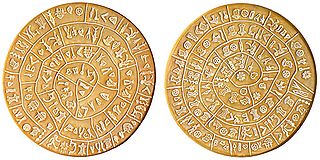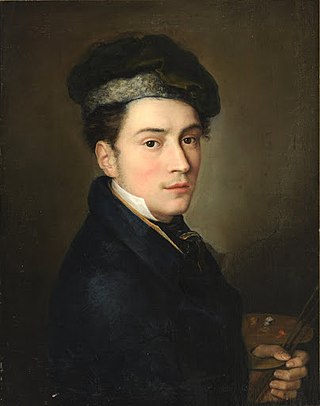
Dionigi Strocchi (6 January 1762, Faenza - 15 April 1850, Ravenna [1] ) was an Italian educator, writer, classical scholar and translator.

Dionigi Strocchi (6 January 1762, Faenza - 15 April 1850, Ravenna [1] ) was an Italian educator, writer, classical scholar and translator.
After studying in a seminary, he moved to Rome in 1783, where he later graduated in jurisprudence. [2] In 1790 he found a job in the Secretariat of Latin Letters in the Holy College. [2] He then returned to his birthplace at the end of the 18th century to support the Cisalpine Republic and its successor the Napoleonic Kingdom of Italy, gaining important jobs in both administrations;. [2] Between 1806 and 1809 he was rector and eloquence lecturer at the Evangelista Torricelli state gymnasium in the city. [3] [4]
He was a friend of Vincenzo Monti, Ugo Foscolo, Paolo Costa, Giovanni Paradisi and Ennio Quirino Visconti and established the neoclassical literary school in Faenza. When the Napoleonic regime fell he returned to the Papal States, taking refuge in San Marino and briefly imprisoned in Bologna. [2] He did not oppose the Restoration and composed a hymn in honour pope Pius IX and his election in 1846. [5] Pius made him a senator in 1848, two years before his death. [2] [6]

He wrote his own poems but is better known as a translator, particularly for his metrical translation of Callimachus's hymns in 1805, which Giosuè Carducci adjudged to be finer than the originals. He also produced metrical translations of Virgil's Georgics in 1831 and his Eclogues in 1834. At the time of his death he was working on a version of Louis I of Bavaria's poems - this was published posthumously in 1856, including two previously published translations of 1836 and 1844.

Marco Girolamo Vida or Marcus Hieronymus Vida was an Italian humanist, bishop and poet.

Carlo Alberto Camillo Mariano Salustri, known by the pseudonym Trilussa, was an Italian poet, writer and journalist, particularly known for his works in Romanesco dialect.

Giovanni Domenico Nardo was an Italian naturalist from Venice, although he spent most of his life in Chioggia, home port of the biggest fishing flotilla of the Adriatic. He learned taxidermy and specimen preparation from his uncle, an abbot. He went in a high school in Udine and studied medicine in Padua, where he reorganized the zoological collections. In 1832 he reorganized the invertebrate collection at the Imperial Natural History Museum in Vienna and in 1840 he became Fellow of the Istituto Veneto di Scienze, Lettere ed Arti, an academy whose aim is "to increase, promulgate, and safeguard the sciences, literature and the arts". Nardo wrote hundreds of scientific publications ranging from medicine and social sciences, philology, technology, physics, but mostly on Venetian and Adriatic zoology. In marine biology, Nardo wrote on algae, marine invertebrates, fishes and sea turtles. A vast collection of his manuscripts and his personal library is preserved in the Natural History Museum of Venice.

The Diocese of Faenza-Modigliana is a Latin Church diocese of the Catholic Church in Italy. It was created in 1986 through a merger of the diocese of Faenza and the diocese of Modigliana.

Carlo Amoretti was an ecclesiastic, scholar, writer, and scientist. He entered the Augustinian order in 1757. To further his studies, he went to Pavia and Parma where he also taught ecclesiastical law.

Andrea Maffei was an Italian poet, translator and librettist. He was born in Molina di Ledro, Trentino. A follower of Vincenzo Monti, he formed part of the 19th-century Italian classicist literary culture. Gaining laurea in jurisprudence, he moved for some years to Verona, then to Venice and finally to Milan, where in 1831 he married contessa Clara Spinelli. They separated by mutual consent on 15 June 1846.

Ireneo Affò was an Italian art historian, writer, numismatist and Franciscan friar.
Alessandro Borgia was an Italian bishop and archbishop.

Luigi Pernier was an Italian archaeologist and academic now best known for his discovery of the Disc of Phaistos.

Faenza railway station serves the city and comune of Faenza, in the region of Emilia-Romagna, northern Italy. Opened in 1893, it forms part of the Bologna–Ancona railway, and is also a terminus of two secondary railways, linking Faenza with Lavezzola and with Ravenna, and with Florence, respectively.

Tommaso Minardi was an Italian painter and author on art theory, active in Faenza, Rome, Perugia, and other towns. He painted in styles that transitioned from Neoclassicism to Romanticism.

The Florence–Faenza railway, also known as Faentina railway, is a railway line in Italy.

Teresa Landucci Bandettini was an Italian dancer, composer of extemporaneous verse, and poet, who is remembered as the Figurante Poetesca.

Paolo Costa was an Italian poet, writer and philosopher. The son of Domenico Costa and Lucrezia Ricciarelli, he began his studies in 1780 in Ravenna under modest teachers. He then moved to Padua and studied there under Melchiorre Cesarotti and Simone Stratico. His studies were interrupted by the French invasion and occupation in 1797, during which he held government roles in both Ravenna and Bologna.

Ottavio Serena was an Italian politician, judge, prefect and historian. He is known in his hometown Altamura for his works about local history, such as the Altamuran Revolution (1799). His contribution and the testimonies he collected allowed to shed light on some historical events (such as the killing of Giovanni Firrao and on legendary toponyms.

Pietro Gagliardi was an Italian painter and architect, who decorated many churches and palaces in Rome and throughout Italy.
Giuseppe Botero, was an Italian writer in various literary genres, representative of the romantic literary movement and also an educator.
Vlaho Stulli, was a Croatian and Ragusan poet, playwright and public servant of the Republic of Ragusa. Influenced by Croatian-Ragusan writers Nikola Nalješković and Marin Držić, as well as Italian Carlo Goldoni, he is best known for his naturalistic satire comediographic work Kate Sukurica in Croatian, Diario (Diary) in Italian and epigrams in Latin language, written to his friends. Stulli lived and wrote during the period of the stronger influence of the French language and literature in Dubrovnik, whose writers and playwrights translated many of Molière's comedies into Croatian, adapting them to local idiom and mentality, as well as influences of Latin language, Italian language theatre troupes and style-pluralistic Croatian literature; the 18th century being considered the "golden century" of Ragusan literature. Stulli is the most prominent representative of the late 18th-century Ragusan drama and his comedy Kate Kapularica the best Ragusan play of that time.
NicolaVillani was an Italian literary critic and Baroque poet.
Vincenzo Berni degli Antoni was an Italian jurist and writer.